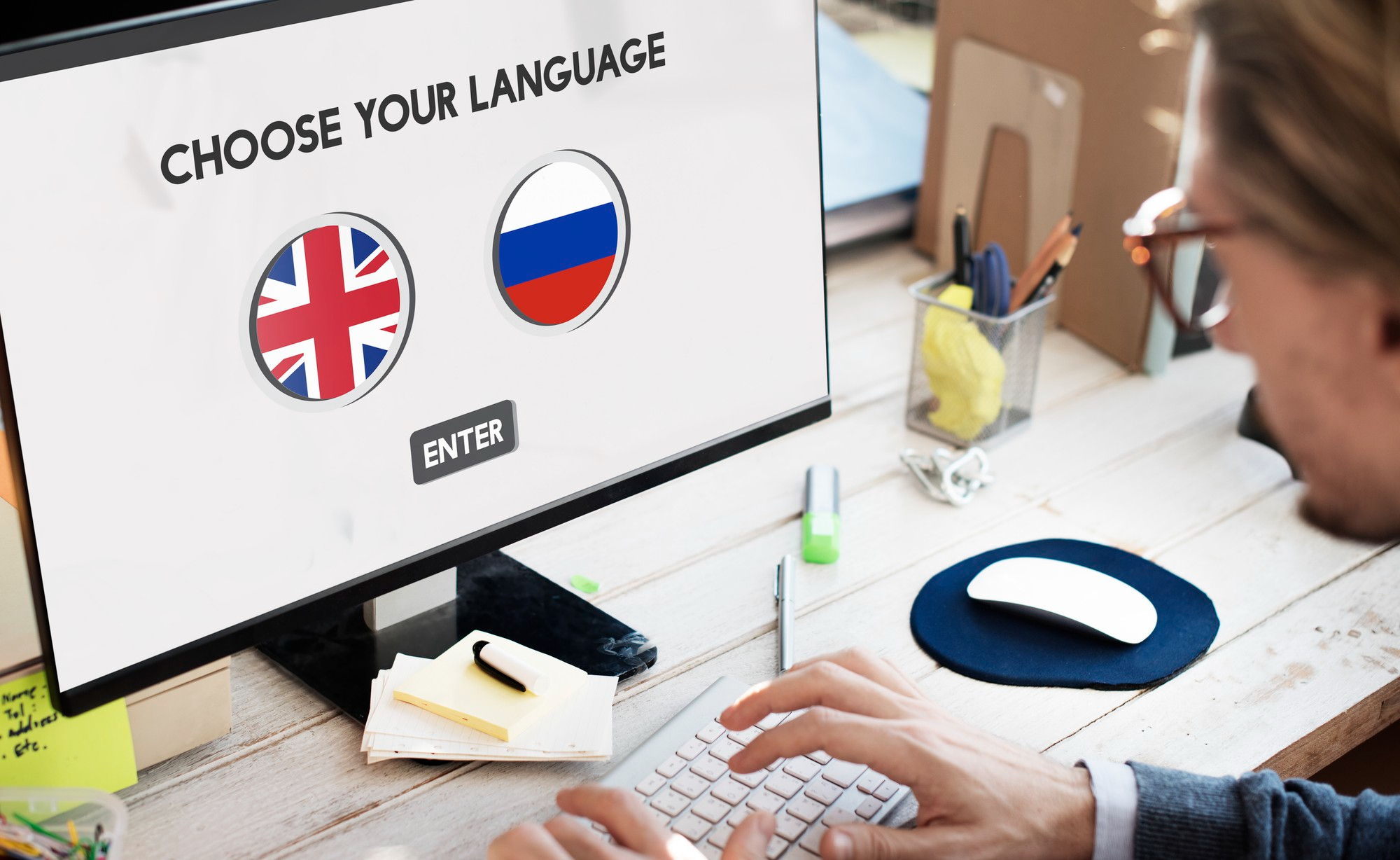
Introduction to Multilingual WordPress Sites
A multilingual WordPress site is a website that is designed to accommodate multiple languages, allowing users from diverse linguistic backgrounds to access content in their preferred language. This capability is particularly valuable for targeting German-speaking audiences, given Germany’s significant online presence and the prominence of the German language within the European Union. By creating a WordPress multilingual site for Germany, businesses and content creators can significantly expand their reach and enhance user engagement.
The importance of language accessibility in today’s globalized digital landscape cannot be overstated. A multilingual website can effectively cater to a wider demographic, allowing users to feel more comfortable and connected. This is especially true in Germany, where many users prefer consuming content in German rather than in English or other languages. By offering content in their native language, businesses can foster trust and improve user experience, leading to higher conversion rates and customer satisfaction.
To accomplish this, various best translation plugins for WordPress are available, enabling site owners to manage translations efficiently. Two of the most prominent options in the market are Polylang and WPML, which are often compared in terms of features, ease of use, and compatibility. The choice between Polylang vs WPML can greatly affect how content is translated and presented on a WordPress multilingual site. Each plugin comes with its unique strengths, making the decision crucial for anyone looking to create an effective multilingual website.
Besides improved user experience, a multilingual site also benefits search engine optimization (SEO). Content tailored for specific languages can enhance visibility in local search results, making it easier for German speakers to find relevant information. As we explore the process of building a multilingual WordPress site for the German audience, we will look into best practices and tools that facilitate this endeavor.
Understanding WordPress Multilingual Plugins
Creating a multilingual WordPress site is essential for reaching a broader audience, particularly in Germany where diverse languages are prevalent. Among the various solutions available, translation plugins stand out as effective tools for building a WordPress multilingual site. Three of the most popular multilingual plugins are WPML, Polylang, and TranslatePress, each offering unique features suitable for site owners aiming to reach German-speaking audiences.
WPML, which stands for WordPress Multilingual Plugin, is a comprehensive tool designed to manage translations throughout the entire WordPress site. This plugin is favored for its extensive support for various languages, including German. WPML allows users to translate posts, pages, custom post types, and even WooCommerce products, making it a capable choice for eCommerce websites. Additionally, WPML offers a robust compatibility with other themes and plugins, which is crucial for optimizing a WordPress multilingual site in Germany.
On the other hand, Polylang is a free alternative that provides a user-friendly approach to creating multilingual content. It allows site owners to define languages for their posts, categories, and tags, facilitating seamless content management. A notable advantage of Polylang is its integration with the WordPress block editor, making it an attractive option for modern site designs. Although Polylang is a solid contender for the German audience, users should note that it may not support automatic translations as effectively as WPML.
Lastly, TranslatePress offers a visual translation interface that empowers users to translate their website directly from the front end. This feature is particularly advantageous for those who are not familiar with coding. Furthermore, TranslatePress supports various language variations, including dialects specific to Germany, ensuring that multilingual sites resonate well with the intended audience. Each of these plugins—WPML, Polylang, and TranslatePress—provides valuable tools for enhancing the visibility and accessibility of a WordPress multilingual site in Germany.
Setting Up Your WordPress Environment
Creating a multilingual WordPress site tailored for German speakers begins with a solid setup of your WordPress environment. The first step is to choose a reliable hosting provider that can support a multilingual platform effectively. Opt for a hosting service that offers strong performance, good uptime, and customer support that understands the nuances involved in managing multilingual sites. Many hosting companies provide one-click installations for WordPress, which significantly simplifies the initial setup process.
Once you have selected a suitable hosting provider, you can proceed to install WordPress. The installation process can vary depending on the hosting service, but most offer automated solutions. Follow the prompts to complete the installation, ensuring you configure settings favorably for a multilingual site. Specifically, you will want to establish the primary language during the initial setup to streamline future translations.
After setting up WordPress, the next key consideration is selecting a theme that is both visually appealing and compatible with the best translation plugins for WordPress. Compatible themes ensure that your chosen multilingual plugins effectively translate your content without breaking layout or design. When evaluating themes, check for compatibility with popular plugins like Polylang and WPML, which facilitate multilingual functionality. Additionally, prioritize themes that have good support and updates, as this can ensure long-term performance and user experience.
Lastly, consider implementing performance optimization tools that enhance loading speed and overall functioning of your site. Plugins for caching, image optimization, and database maintenance are essential for ensuring a responsive user experience, particularly on a multilingual site where resources may be stretched. Taking these steps into consideration will help you build a robust WordPress multilingual site in Germany that caters well to your audience’s needs.
Installing and Configuring the Multilingual Plugin
Creating a WordPress multilingual site in Germany demands careful selection and configuration of a suitable translation plugin. Two of the most popular choices are Polylang and WPML, each offering distinct advantages in managing multilingual content. This section outlines a step-by-step guide for installing and configuring your chosen plugin to effectively cater to German audiences.
To commence, first log in to your WordPress dashboard. Navigate to the ‘Plugins’ section and click on ‘Add New.’ In the search bar, type in the name of your preferred plugin, either “Polylang” or “WPML.” Click ‘Install Now’ and then ‘Activate’ once the installation completes. Both plugins provide a user-friendly interface, facilitating the next steps in setting up your multilingual site.
Once activated, go to the plugin settings located in the sidebar. Here, you will be prompted to select your default language; in this case, choose German as your primary language. This choice ensures that your site reflects the correct linguistic preferences from the start.
Next, you can add additional languages relevant to your target audience by navigating to the “Languages” section of the plugin settings. For Polylang, simply click ‘Add New Language’ and choose from the list provided. For WPML, visit the ‘Languages’ tab under WPML settings to manage your languages accordingly.
After setting up languages, customize your plugin’s settings, which include features like translating menus, widgets, and custom post types. Ensure that each language is properly linked to its respective content, allowing visitors to switch languages seamlessly on your site. This meticulous configuration sets a solid foundation for your WordPress multilingual site and enhances user experience, especially for German speakers.
Translating Content Effectively
Creating a multilingual WordPress site tailored for German speakers involves careful consideration of how content is translated. When deciding to translate existing content into German, two primary options come to the forefront: manual translation and automatic translation tools. Each option offers unique advantages and considerations that can significantly impact the user experience.
Manual translation is often regarded as the gold standard in ensuring accuracy and cultural relevance. It allows for the nuances of the German language and culture to be respected and properly represented. Given the diversity within the German-speaking world, manual translation can facilitate the inclusion of local dialects, idiomatic expressions, and culturally specific references, enhancing engagement among users. Moreover, this approach ensures that the translated content sounds natural and is contextually appropriate, thereby fostering a higher level of trust among readers.
On the other hand, automatic translation tools provide an efficient alternative, especially when dealing with large volumes of content. However, they often lack the ability to catch subtle cultural nuances and may produce translations that are either literal or awkward. For instance, employing the best translation plugins for WordPress can help streamline automatic translations, yet caution is advised. Solutions like Polylang and WPML, while effective, may require additional oversight to ensure quality. The choice between manual or automatic translation ultimately hinges on the specific needs of the WordPress multilingual site in Germany, including budget, timeline, and intended audience.
Furthermore, cultural sensitivity and localization should be integral parts of the translation process. Engaging German-speaking users necessitates understanding regional variations and preferences, which can influence how content is perceived. A well-localized translation can transform generic content into a relatable message, further attracting and retaining a German audience.
In conclusion, whether opting for manual translation or utilizing automatic tools, the goal remains to effectively communicate with German speakers. Balancing quality, cultural relevance, and efficiency is key in building a successful multilingual WordPress site that resonates with its target audience.
SEO Considerations for Multilingual Sites
When establishing a WordPress multilingual site tailored for German speakers, implementing effective search engine optimization (SEO) strategies is essential to enhance visibility and reach. Search engines value well-structured, language-specific content, which necessitates thoughtful configuration of your site’s SEO settings to cater to the German language. This involves selecting the proper language settings, keyword research specific to the German market, and the creation of localized content that resonates with the target audience.
One of the vital components of SEO for multilingual sites is the use of hreflang tags. These tags inform search engines about the language and regional targeting of a webpage, guiding them to deliver the most relevant results to users based on their language preference. By implementing hreflang tags correctly, typically using plugins such as the best translation plugins for WordPress, you can ensure that your German-speaking audience receives content customized to their language, thereby enhancing user experience and engagement.
Another critical strategy is developing language-specific content that reflects cultural nuances and preferences unique to German speakers. This may encompass using local idioms, adjusting tone, and incorporating keywords that resonate more effectively with the German audience. It is also advisable to conduct comprehensive keyword research to identify relevant phrases in German that can vary from their English counterparts, further informing your content strategy.
In conclusion, optimizing a WordPress multilingual site for German speakers demands careful consideration of SEO strategies. By configuring SEO settings specifically for the German language, utilizing hreflang tags, and creating distinctive content, your site will achieve improved visibility, ultimately catering to the needs of your target audience and enhancing your overall SEO performance.
Testing Your Multilingual Site
Launching a WordPress multilingual site tailored for German speakers involves several critical testing phases to ensure an impeccable user experience. It is essential to verify that all elements of the website function correctly across different languages. Adequate testing helps you identify issues such as language consistency, broken links, and the functioning of language switching features.
Firstly, you can use a variety of tools to check for language consistency. For instance, implementing plugins like WPML or Polylang not only facilitates language translation but also simplifies monitoring the language settings across various pages. By creating a systematic checklist, you can ensure each page is fully translated and no sections are inadvertently left in the default language. This meticulous approach contributes directly to the quality of your site, particularly for a WordPress multilingual site in Germany.
Next, broken links can severely disrupt the user experience. Utilizing a tool such as Screaming Frog or Google Search Console enables you to perform a comprehensive scan of your website for any broken links. This step is crucial for maintaining the credibility and functionality of your site. Users relying on a multilingual interface should have seamless navigation between languages, and broken links can create confusion, leading to high bounce rates.
Additionally, testing the language switching feature is essential. Users expect a smooth transition between languages, so it is imperative to verify that all language interface options work as intended. Check that when a user selects a different language, the content seamlessly adapts without errors or misalignment. These considerations ensure a robust, user-friendly WordPress multilingual site that meets the needs of German speakers.
In conclusion, thorough testing of your multilingual site before launch guarantees that you achieve optimal functionality and user satisfaction. By employing the right tools and maintaining vigilant quality checks, you can create an effective online presence that resonates well with your target audience.
Maintenance and Updates for a Multilingual WordPress Site
Creating a multilingual WordPress site is a significant step toward reaching a wider audience, particularly German speakers. However, the journey doesn’t end with the launch of your website. Long-term maintenance is essential for ensuring that your site remains functional, relevant, and user-friendly. This involves several key practices, including keeping your plugins updated, monitoring translations, and conducting regular content audits.
First and foremost, keeping your best translation plugins for WordPress up-to-date is critical. Plugins like Polylang or WPML, which are popular options for handling multilingual content, frequently release updates to improve performance and compatibility. Maintaining the latest versions of these plugins minimizes security vulnerabilities and enhances the overall user experience. Running outdated plugins can lead to compatibility issues or, worse, a breakdown of translation features, which could alienate your German-speaking audience.
In addition to updating plugins, monitoring translations is equally important. Ensure that all content is accurately translated and reflective of the original message. This includes reviewing user-generated content and comments since these elements can significantly affect engagement within the German-speaking community. Employing a system for feedback can aid in recognizing any translation discrepancies that may need correction.
Regular content audits play a vital role in maintaining relevance. With changes in language use, expressions, and cultural context, it is essential to revisit existing content periodically. This ensures that the information provided remains accurate and useful for your readers. A thorough audit can help identify outdated posts, allowing you to revise or archive content that may no longer resonate with your audience.
By prioritizing these ongoing maintenance tasks, your WordPress multilingual site for German speakers will not only stay updated but also thrive in engaging users effectively.
Conclusion and Resources
Creating a WordPress multilingual site tailored for German speakers involves several critical steps, from selecting an appropriate translation plugin to ensuring that your content is optimized for local language nuances. As we explored throughout this guide, the choice between popular translation plugins like Polylang and WPML can significantly affect the functionality and user experience of your site. It is essential to evaluate the features and support each option provides, considering factors such as ease of use, price, and compatibility with your existing theme and plugins.
The incorporation of multilingual capabilities can broaden your reach and improve engagement with German-speaking audiences. The process typically requires thoughtful planning, including the structuring of your content for translation and the selection of appropriate settings that cater to the needs of your target users. An effective WordPress multilingual site for Germany should engage visitors through well-translated content that respects cultural nuances, thus enhancing user interaction and potentially increasing conversion rates.
For those seeking to delve deeper into this subject, numerous resources are readily available. There are comprehensive blog posts and tutorials on websites dedicated to WordPress development, which can provide valuable tips and best practices. Communities and forums, such as the WordPress support forums, are also excellent places to ask for advice and share experiences. Furthermore, many translation plugins come with extensive documentation that can guide you through complex scenarios and troubleshooting, ensuring that you utilize their features to their fullest potential.
In conclusion, a thoughtful approach to building a multilingual WordPress site can yield significant benefits for your audience and overall site performance. With the right tools and resources at your disposal, you can create an engaging experience for German speakers that enriches your site’s content while positioning it for success in a global market.




